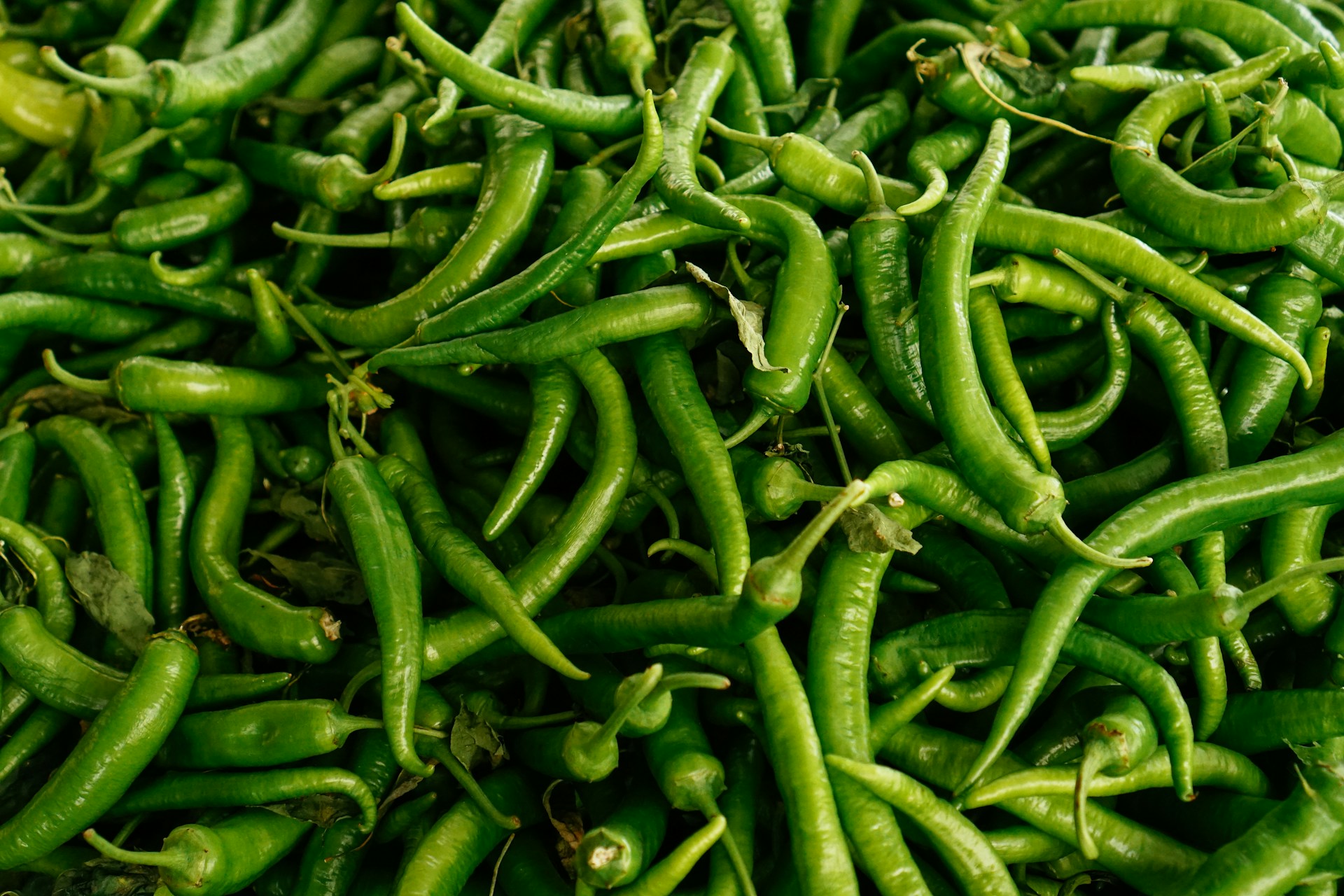Prediction mechanisms are now critical drivers of major decisions in the global food supply chain.
This blog post will delve into how forecasting can streamline the produce distribution process.
We will explore the existing models and their implementation in various scenarios.
Key benefits of these techniques will also be highlighted.
Furthermore, potential drawbacks and solutions will be discussed.
All in an effort to provide a comprehensive understanding of how clever use of forecasts can optimize produce distribution.
Contents
- Forecasting Uses To Optimize Produce Distribution
- 1. Reducing food spoilage and unnecessary waste
- 2. Enhancing Customer Satisfaction and Loyalty
- 3. Adjusting Order Quantities Based on Demand
- 4. Predicting the Best Shipping Routes and Times
- 5. Managing inventory of perishable items effectively
- 6. Enabling Growth with Efficient Use of Resources
- 7. Implementing Competitive Pricing Strategies
- 8. Optimizing labor allocation and workloads.
- 9. Mitigation of Supply Chain Risks.
- 10. Improving sustainability and eco-friendliness
- The Bottom Line
Forecasting Uses To Optimize Produce Distribution
1. Reducing food spoilage and unnecessary waste
In the produce distribution sector, one crucial area that stands to benefit greatly from accurate forecasting abilities is the mitigation of food spoilage and unnecessary waste.
The nature of perishable goods, especially fruits and vegetables, necessitates careful management and efficiency in their distribution to reduce the chances of spoilage, which could drastically impact profits negatively.
Predictive analytics plays an invaluable role in this aspect, providing invaluable insights to forecast demand accurately, thereby preventing overstocking and understocking scenarios.
Through advanced forecasting, distributors can optimize their stock levels, ensuring the right quantity of goods are at the right place and at the right time, thus minimizing food wastage.
Utilizing the predictive capabilities of weather forecasting technology is another tool that can be employed to anticipate produce spoilage.
With the knowledge of upcoming weather conditions, appropriate measures can be taken to minimize spoilage arising from unfavorable climatic conditions.
Machine Learning (ML) and Artificial Intelligence (AI) technologies facilitate carrying out more complex forecasts, drawing from vast data sets that span customer buying patterns, seasonal demand fluctuations, and even changes in consumer dietary preferences to make highly accurate predictions.
This level of detailed analysis helps to create strategies that are much more defined and precise in combating food spoilage and reducing waste.
Another advantage of these predictive models is they can progressively learn and improve their accuracy over time, becoming even more effective in waste management.
Accurate forecasting also supports businesses in making informed decisions on the production end, helping to dictate what amount of produce to grow and when, contributing substantially towards minimizing food wastage.
This approach not only helps to save resources but also contributes to better inventory management, promoting overall supply chain efficiency.
Finally, real-time monitoring and response to changes through advanced analytics can further optimize produce distribution, contributing to waste reduction efforts.
In all, forecasting – through its ability to provide actionable insights based on data – is an essential tool for distributors and producers in their quest to minimize food spoilage and unnecessary waste in the supply chain.
Through correct implementation, businesses stand to enjoy the dual benefits of both reducing costs and enhancing sustainability, thereby making a meaningful contribution towards achieving their environmental responsibility goals.
2. Enhancing Customer Satisfaction and Loyalty
One of the crucial applications of accurate forecasting in optimizing produce distribution lies in its potential to enhance customer satisfaction and loyalty.
By correctly anticipating demand, suppliers can ensure they consistently meet the needs and expectations of their clients.
This helps in building customer trust and can possibly increase repeat purchases.
Customers are more likely to continue buying from a supplier that consistently provides them with fresh, quality produce in the right quantities.
Moreover, accurate forecasting and optimal distribution means reducing the chances of stock-outs or overstocking, both of which can negatively impact customer satisfaction.
A stock-out can lead to missed sales opportunities and frustrated customers, while overstocking can result in spoilage, especially for perishable produce.
To mitigate these risks, forecasting may incorporate machine learning and AI technologies, accounting for variables such as seasonal effects, market trends, and customer buying patterns.
By doing so, it becomes possible to achieve a higher level of precision in predicting demand and consequently enhancing customer satisfaction.
It is also worth noting that satisfied customers are more likely to become brand ambassadors voluntarily, spreading positive word of mouth and drawing in new customers.
This ripple effect creates a positive feedback loop, driving further sales and strengthening customer loyalty.
Powered by modern technologies and data science, forecasting in produce distribution can thus serve as a valuable tool for securing competitive advantage in today’s cutthroat market.
This strategy not only optimizes the supply chain but also fuels growth symbiotically with customer satisfaction and loyalty.
An optimized supply chain that guarantees regular availability of popular items can directly affect a company’s reputation and brand image.
Therefore, adopting efficient forecasting techniques is a key success factor for businesses keen on boosting customer loyalty and market share.
In summary, enhancing customer satisfaction and loyalty through forecasting is a multi-faceted strategy with repercussions beyond just operational efficiency.
3. Adjusting Order Quantities Based on Demand
One of the major capabilities of forecasting in produce distribution is the ability to adjust order quantities in response to anticipated demand.
By leveraging accurate predictive models, businesses can identify seasonal trends, fluctuations, and other factors that influence the demand for different products.
Data-driven forecasting allows organizations to determine the optimal quantity of each product to order, minimizing the risk of either shortages or excess inventory.
Unexpected shortages can lead to lost sales and disappointed customers, while excess stock might result in increased storage costs and perishable items going to waste.
Reducing these risks is a key benefit of demand-based order adjustment, which relies on monitoring and analyzing sales data and market trends.
By regularly checking these data points, businesses can adjust their orders to protect profits and avoid unnecessary waste or cost.
This is particularly crucial in the realm of produce distribution, where items often have a short shelf life and demand can be significantly influenced by factors such as seasonality and market trends.
The implementation of advanced forecasting software can automate much of this process, even providing real-time updates to adapt to fluctuations in demand and changes in the market.
These tools can be programmed to calculate the optimal order quantity for each product, factoring in historic sales data, current demand, and future predictions.
This calculated figure can then be sent automatically to suppliers, greatly simplifying the ordering process and removing much of the potential for human error.
By adjusting orders to match predicted demand, organizations can optimize their inventory levels, reducing the risk of oversupply and under-supply.
They can also plan their storage needs more effectively, minimizing waste and costs associated with overstocking.
Furthermore, knowing the quantities of produce expected in advance allows for better planning in terms of refrigeration requirements, package materials, and labor allocation.
While these predictive models are not foolproof and must be reviewed and refined regularly to reflect the most current information and trends, they can significantly enhance the accuracy and efficiency of inventory management.
Ultimately, adjusting order quantities based on demand leverages the power of forecasting to optimize produce distribution, with benefits for businesses, customers, and the environment alike.
4. Predicting the Best Shipping Routes and Times
The strategic implementation of forecasting in the determination of optimal shipping routes and times is crucial in the distribution of produce.
With the use of advanced analytics and algorithms, companies can predict the most effective delivery routes.
These techniques can take factors such as weather, traffic, and fuel costs into account to ensure the fastest, most cost-effective delivery method.
Furthermore, predicting shipping times accurately can greatly enhance customer satisfaction, as customers receive their produce as fresh as possible and in a timely manner.
An important feature of this kind of forecasting is the dynamic nature of the calculations.
As changes occur in real-time, such as traffic disruptions or weather variations, algorithms can recalculate the optimal route.
This level of responsiveness can significantly reduce delays and enhance the overall efficiency of the produce distribution system.
While these predicted routes and times are predominantly based on data, they also need manual input and oversight to ensure their feasibility and efficiency.
Prediction models can also be used to forecast demand and adjust the volume of produce distributed accordingly, thereby avoiding wastage and ensuring optimal utilization of resources.
Companies embracing forecasting can optimize their shipping schedules, ensuring their delivery trucks are utilized in the most efficient way possible.
Routines and sequences can be implemented, saving time, reducing the chance of human error, and boosting overall productivity.
This optimal utilization of resources leads to cheaper operating costs which can be passed onto the end consumer in the form of lower prices.
As part of a robust forecasting strategy, predicting the best shipping routes and times can transform a company’s distribution process.
Despite the complexity of the necessary analytics, the benefits to cost, efficiency, and customer satisfaction make incorporating forecasting into the distribution process a highly valuable tactic.
5. Managing inventory of perishable items effectively
Within the realm of produce distribution, inventory management of perishable items is a critical aspect that requires careful monitoring and forecasting.
The volatile lifespan of perishable goods necessitates a precise and accurate inventory system that can mitigate food spoilage and unnecessary waste.
Foremost, businesses need to have a clear understanding of the shelf-life of their perishable produce.
This knowledge allows them to implement optimal ordering cycles to ensure a constant supply of fresh produce without overstocking and risking spoilage.
Moreover, utilizing a First In First Out (FIFO) policy can further enhance inventory management by ensuring that older stock is utilized first, minimizing possible spoilage.
Additionally, effective forecasting can identify trends and patterns in consumer demand.
In turn, this helps to adjust the stock levels of specific items more accurately, reducing the likelihood of waste due to unsold goods nearing their expiration date.
By combining historical sales data with external factors like seasonal changes and market trends, businesses can forecast demand more precisely and manage their perishable inventory effectively.
Digital inventory systems also play a significant role as they provide real-time data, thus facilitating fast, informed decisions regarding stock and distribution.
This approach helps in maintaining balanced inventory levels aligning with the actual demand, thereby reducing storage costs and keeping waste to a minimum.
Moreover, effective perishable inventory management also involves prompt coordination with suppliers and transporters.
Timely communication ensures that fresh stocks reach their destination in the best condition possible, again minimizing waste and optimizing customer satisfaction.
To further enhance management, businesses may consider implementing automated inventory systems.
Such systems take into account real-time sales data and automatically trigger orders when stock levels for particular items drop to a certain threshold, ensuring continuous supply of fresh produce.
Consequently, effective forecasting and management of perishable inventory yield substantial benefits, both in reducing waste and costs and in ensuring optimal customer satisfaction with the quality of produce.
6. Enabling Growth with Efficient Use of Resources
Efficient use of resources can be a significant contributor to business growth, especially in the context of produce distribution.
Produce distribution businesses, like any other business, have a finite amount of resources at their disposal.
These resources can be tangible, such as stock, vehicles, and warehouse space, or intangible, like time, labor, and information.
The way these resources are managed and utilized directly affects the business’s capacity to grow and thrive in a competitive market.
Effective resource management, powered by forecasting tools, can enable the business to achieve more without necessarily investing in more resources.
This is because forecasting provides the clarity needed to make the most efficient use of what’s already available.
For instance, accurate demand forecasting can help a business adjust its stock levels and order quantities, thus minimizing waste due to overstocking or missed opportunities from understocking.
Using forecasting for route planning can also mean the available vehicles and drivers are used efficiently, resulting in reduced fuel consumption and quicker deliveries.
Workforce forecasting, on the other hand, can help optimize labor allocation, ensuring tasks are assigned to the right people at the right times, boosting productivity and reducing unnecessary downtime.
This level of resource efficiency becomes a growth enabler as it contributes to improved profitability, increased customer satisfaction, and the capacity to take on more clients without overstretching resources or sacrificing quality.
Operational efficiency can also translate to increased competitiveness, giving the business an edge over competitors who may be less efficient in their resource usage.
Efficient resource utilization powered by forecasting can also provide a solid foundation for business expansion.
With a clear course of action derived from accurate forecasts, the business can grow sustainable without the fear of running out of resources or overwhelming their existing infrastructure.
Consequently, enabling growth with efficient use of resources is a significant use of forecasting in optimizing produce distribution, contributing directly to the bottom line and the long-term sustainability of the business.
The key, therefore, is to embrace forecasting, harness its insights, and integrate them into the resource management strategy, thereby unlocking the full potential of the resources currently available and paving the way for continued business growth.
7. Implementing Competitive Pricing Strategies
The efficient forecasting can be a valuable tool in implementing competitive pricing strategies in the produce distribution industry.
Intelligent software can utilize historical data, market trends, and demand patterns to forecast future product prices and ensure a company’s offerings are competitive.
Understanding the expected costs and revenues and using them as a basis for setting prices could help your company outperform its competition.
Effective use of forecasting in competitive pricing allows a company to stay ahead in the market, especially in a sector as dynamic as produce distribution.
Different pricing strategies, such as dynamic pricing or price discrimination, can be implemented effectively with accurate forecasting.
For instance, during peak seasons when the demand for certain produce is high, companies can adjust their prices accordingly to optimize profits.
Similarly, in times of low demand, accurate forecasting can help reduce prices to minimize stock wastage and boost sales.
The ability to anticipate market changes and respond with appropriate pricing changes is a crucial advantage for any produce distributor.
Further, it is essential to factor in the volatility of the produce market – the prices for fruits and vegetables can fluctify based on season, weather, and availability.
By effectively utilizing forecasting to inform pricing strategies, companies can secure a competitive advantage.
It is crucial to note, however, that while forecasts can guide pricing decisions, they should not be the sole determinant.
A variety of factors, including the company’s cost structure, the competitive landscape, and consumers’ willingness to pay, should also be taken into consideration.
In shaping your pricing strategy, awareness of the factors influencing the forecast’s accuracy is key.
Not only in the context of future trends but also in how these trends relate to your pricing decisions, especially in a sector as unpredictable as produce distribution.
The goal is to make pricing decisions that maximize profits while maintaining customer satisfaction and loyalty.
8. Optimizing labor allocation and workloads.
One of the key areas where forecasting proves particularly beneficial in optimizing produce distribution is in the streamlining of labor allocation and workloads.
In the produce distribution industry, efficient workforce management can make a considerable difference in operational productivity.
To leverage the full capacity of the workforce, it is crucial to align labor resources with the anticipated workload based on predictive analyses.
Forecasting helps to develop an understanding of the fluctuations in demand, which consequently allows management to allocate labor more accurately according to expected workloads.
This optimization does not only maximize productivity but also reduces labor costs by preventing instances of overstaffing.
Moreover, accurate forecasting helps to predict peak order periods, therefore aiding in scheduling tasks and preventing employee burnout due to heavy workloads.
Additionally, it provides valuable insights to determine ideal delivery times, enabling businesses to manage their workforce more effectively to meet delivery demands.
Forecasting allows companies to plan ahead, ensuring that they have adequate labor force not just for standard operations but also to handle exceptions and unexpected surges in demand.
It also assists in training need identification, offering the possibility to plan for capacity building initiatives during less busy periods.
By enabling proactive workforce management, forecasting helps in ensuring that the right people are performing the right tasks, at the right time, thereby optimizing labor allocation and workload management in produce distribution.
To sum up, forecasting provides a strategic viewpoint about labor allocation and workloads that can significantly improve operations and profit margins in the produce distribution sector.
Thus, utilizing forecasting tools for workforce planning in the produce distribution industry is a crucial part of strategic management, fostering a well-structured and productive environment.
Employing forecasting to optimize labor allocation and workloads is a forward-thinking approach that enhances both worker satisfaction and overall business efficiency.
Ultimately, it contributes to sustainable growth in the dynamic and competitive market of produce distribution.
When implemented effectively, forecasting with regards to labor allocation and workloads can drive significant operational excellence, making it a key factor in optimizing produce distribution.
9. Mitigation of Supply Chain Risks.
In optimizing produce distribution, one of the significant factors under consideration is the mitigation of supply chain risks.
Essentially, food supply chains are full of potential risks, such as harvest failures, delivery delays, or warehouse damages.
Forecasting methods and predictive analytics are useful in proactively addressing these issues, allowing for necessary precautions to be put in place.
With robust forecasting capabilities, businesses can identify potential disruptions early on, and make necessary adjustments or preparations accordingly.
Especially in the realm of perishable goods, a slight delay or disruption in the supply chain can lead to significant losses.
Investing in forecasting technology for risk mitigation purposes reduces the likelihood of such losses and boosts the overall efficiency of the produce distribution system.
In the face of irregularities, predictive forecasting also helps to establish alternative supply routes or identify alternative suppliers in advance.
This suppleness to respond to disruptions protects against unexpected circumstances while maintaining a steady supply, thus increasing the resilience of produce distribution networks.
Moreover, by mitigating supply chain risks, businesses have the opportunity to maintain their reputation and keep their customers’ trust, as they can meet the produce demands consistently.
Cutting-edge forecasting tools can also expose underlying supply chain vulnerabilities that might have been overlooked, such as dependence on a single supplier or a specific transportation route.
With this information at hand, companies can strategize and fortify their supply chain management, leading to balanced distribution systems and risk diversification.
A reliable forecast is quite literally about anticipating the future, and in doing so, it offers businesses the priceless advantage of time.
With time, organizations can devise plans, generate backups, reset priorities and reconsider resource allocation, thereby effectively diffusing looming risks.
Thus, proper use of forecasting not only optimizes produce distribution but also strengthens the underlying system, making it resilient against potential perils.
It’s clear that supply chain risk mitigation through forecasting presents ample opportunities for innovation, efficiency, and sustainability in the produce distribution system.
10. Improving sustainability and eco-friendliness
In the ever-evolving dynamics of modern businesses, improving sustainability and eco-friendliness is a growing necessity, especially in the realm of produce distribution.
Forecasting is a powerful tool that can be utilized to reduce the environmental impact of these operations.
By accurately predicting market trends, businesses can ensure they do not overproduce, which leads to waste reduction and responsible resource management.
A more efficient use of natural resources will promote greater sustainability in the industry.
Accurate forecasting models can enable businesses to optimize operations and reduce their carbon footprint significantly.
Transportation, a significant source of greenhouse gas emissions in the produce supply chain, can be made more efficient with good forecasting.
This includes selecting optimal routes, avoiding peak traffic times, and reducing the number of trips made – all of which leads to less fuel usage.
Besides, knowing the freight volume and shipment timing can help with the strategic positioning of bulk shipping, which reduces energy consumed in transportation.
In terms of energy use in warehouses, forecasting allows for efficient management and use of power, thereby lowering the carbon footprint.
For instance, refrigeration units in warehouses, necessary for perishable produce, can cost significant energy; knowing how much to store and when can result in better energy utilization.
Also, using forecasting for proper inventory management can reduce the amount of product that ends up in the landfill, significantly minimizing environmental waste.
The optimal use of resources driven by forecasting also inherently promotes a kind of production and consumption model that upholds circular economy principles – a win for sustainability.
Moreover, businesses showcasing a commitment to sustainability and environment-friendly practices through forecasting utilization can bolster their brand image and customer loyalty.
The fact is that consumers are increasingly concerned with the environmental impact of their purchases, and businesses acknowledging this shift are likely to garner more consumer support.
The growing emphasis on sustainable progress has positioned forecasting as an important component of the produce distribution industry’s green transition.
The Bottom Line
Harnessing the power of analytics in the world of food services presents a vast array of operational advantages.
Through active reduction of food spoilage and waste, businesses can significantly enhance eco-friendliness, sustainability, and resource efficiency, all crucial for sustainable growth.
Consumer loyalty can be greatly optimized with tailored services and competitive pricing, grounded in a smart understanding of demand patterns.
Innovations in inventory and supply chain management, guided by predictive analytics, significantly improve labor efficiency, mitigate risks, and establish a robust business model.
These are all achievable by leveraging analytics, truly painting a progressive picture for the future of the food service industry.




